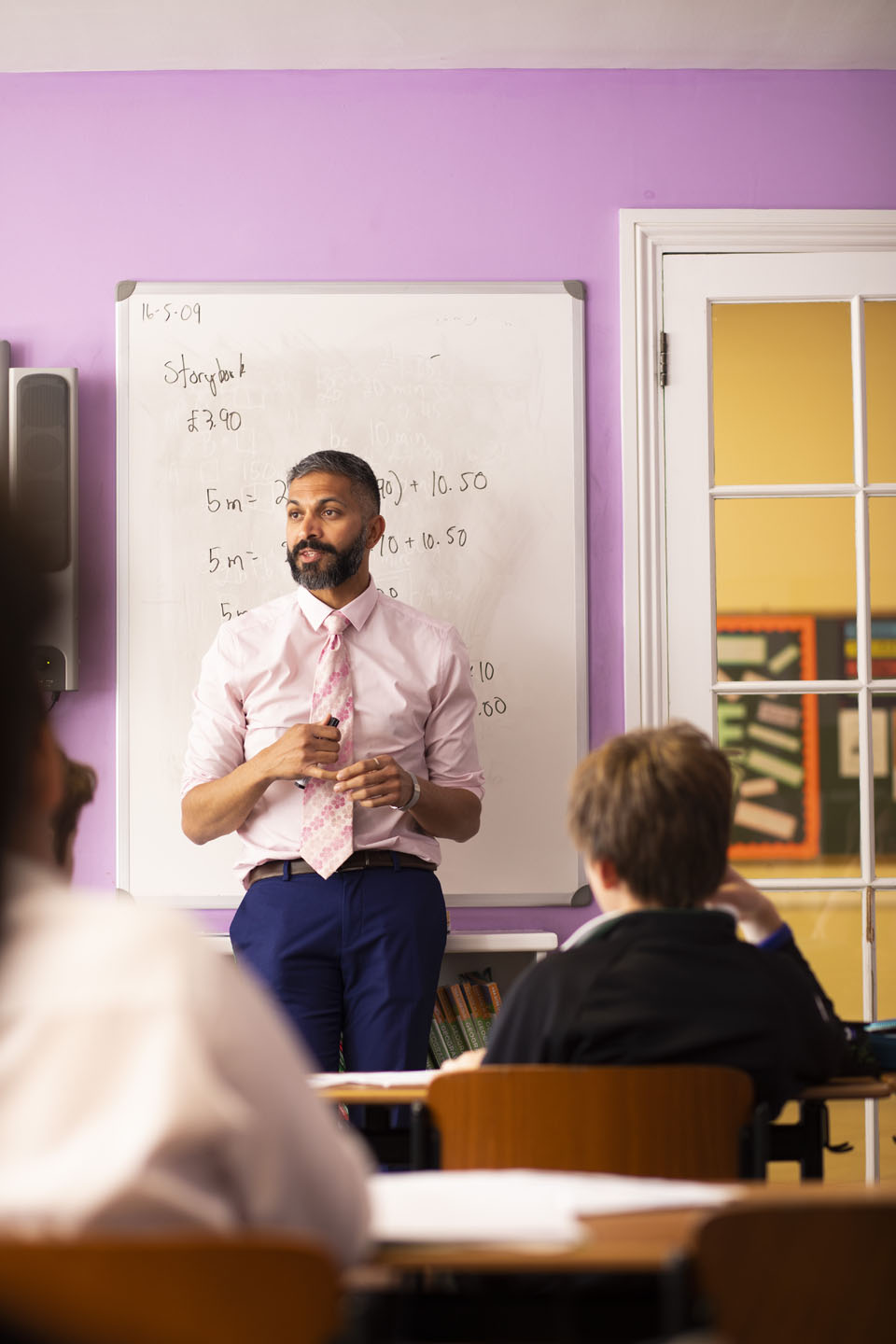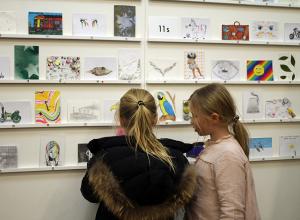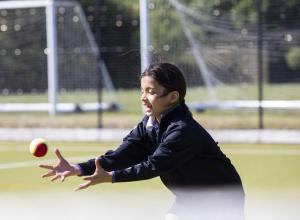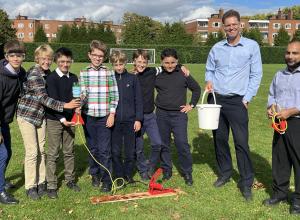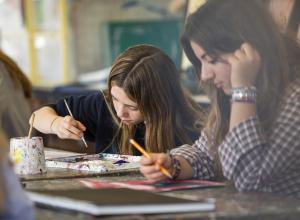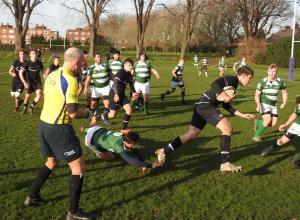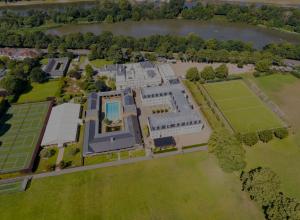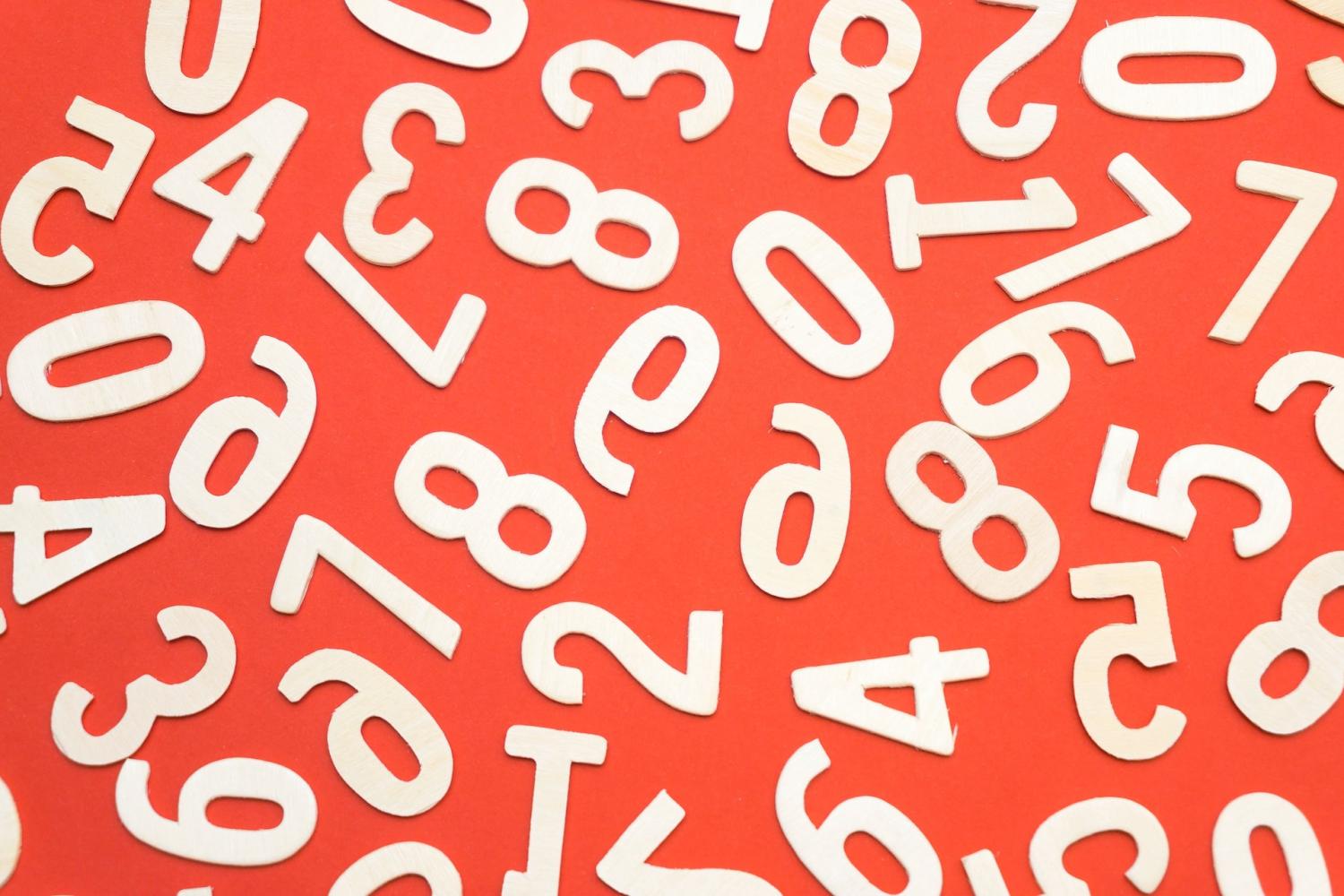
In his first Maths Mastery blog of the year, Warren Rodricks explains why understanding and analysing numbers is crucial both to children's futures and that of society itself
The start of the year, exciting as it is, is always filled with uncertainty. And this uncertainty always leads to questions from children and from parents. I am using the theme of numbers to frame this blog to help address some of the questions I have heard pupils and parents. This might sound a bit lateral but please indulge me, I hope you’ll get the idea as we go along.
I’m starting with the number two: the two big changes we made in Lower Prep Maths last year. The first was moving from ability groupings to mixed ability classes in two of the three year groups. As teachers, we believed that the change would be beneficial to all of our pupils given the way a mastery programme works. Our end of year results underlined our beliefs as, even though we were locked down again, our pupils showed excellent attainment and progress. This year, we are now completely mixed ability throughout Lower Prep maths classes and we are excited about the further impact such classes will have into the future.
Last year’s second big change was in class sizes. Back then, lockdown pressures obliged us to cut teaching class numbers from four to three. This year, with the bubble system removed, the number of teaching classes has gone from three back to four. Trust me, this really is a significant change and one which our teaching team is ecstatic about. In terms of numbers, our maths classes are now between 14-16 pupils per class. This means there is plenty of partner time for the pupils and as teachers, we have increased ‘face-time’ with each of our pupils, helping us to make a bigger impact with individuals whilst also knowing that our pupils still have the opportunity to be independent in their thinking and their work. Numbers really do make a difference.
The number of Maths teaching classes in Lower Prep has gone from three back to four. This really is a significant change and one which our teaching team is ecstatic about
The second part of this blog also revolves around numbers but this time in the context of pupil ability; specifically what we see in a ‘strong mathematician’. In the past, far too often, mathematical ability has been judged on calculation. Teachers and parents could be led into thinking that if a pupil was strong in the four operations that they were good at maths. This is a notion that we are trying to change through mastery. Yes, calculation plays a role in mathematics, but I do also have a calculator which does the job better. A better guide to ability is a pupil’s facility for communicating their thought process, their reasoning and problem-solving skills and most importantly, their ability to apply mathematics to real world situations. The next set of numbers will, hopefully, illustrate what we are doing in class.
We are striving to show our pupils why number knowledge is so crucial in the consideration of our future as a society.
For the 8s, a number in focus was 30 000. Did you know that there are approximately 30 000 animal species on the verge of extinction? And this is a conservative estimate with some studies suggesting that number rises to 1 000 000 if all living species are considered. These numbers are being used in a study of number and place value in the context of Animal Conservation, giving the pupils a deep understanding of the plight of creatures great and small and the impact we are having on them. We’ll use endangered animal numbers to discuss what quantity actually looks like and what it really means beyond our classroom walls. The delight that our pupils have in viewing pictures and videos of wildlife draws them into the importance of understanding what number really means as they begin to realise that through human action these numbers are dwindling and that if we don’t change our actions, these numbers will continue their countdown to extinction.
For the 9s, the magic number was 189 904. This number is what footballer Harry Maguire makes in pounds, per week!
For the 9s, the magic number was 189 904. This number is what footballer Harry Maguire makes, per week! Our pupils were flabbergasted that anyone should make so much money for ‘kicking a football around’, yet this was nothing compared with the understanding that this equated to Mr Maguire making more than £9 000 000 per year. The salary presented has been used, not only in partitioning and place value exercises, but in discussions as a part of the cost of living and social justice. Through repeated lockdowns we looked at what services were essential and who was putting themselves at risk for the good of the rest of us. Not surprisingly our pupils could not seem to justify the exorbitant figures some footballers were paid compared to grocery delivery drivers, doctors, nurses and even teachers. Understanding numbers here has led to a deeper understanding of the financial inequality found throughout society.
For the 10s one of the key numbers studied is 13 649 359. In the UK, this is the approximate number of people currently living in poverty.
For the 10s one of the key numbers studied is 13 649 359. In the UK, this is the approximate number of people currently living in poverty. This gains greater significance when another number was brought into the discussion. There are 171 billionaires living in the UK. Our discussions have grown in interest as the pupils try to comprehend why 20% of the population is living in poverty (which includes 4.2 million children) when there is so much obvious wealth in the country. A big question that has emerged is: Are we doing enough to help our fellow human beings? Again, though our teaching focus is number and place value, we are not using numbers without any importance, randomly drawn up as we go. We are studying numbers as they appear in the world and discussing mathematical and social issues based on the numbers we use, giving our pupils a deeper insight into how maths actually works in the real world. Our 10s will consider the numbers of poverty, whilst looking in part, at the historical causes and the current issues around such numbers, hopefully leading them to lead the changes that must be made if we are to ever achieve true equality.
Today, at Harrodian, the study of numbers is not random. It is not unimportant. Rather we are striving to show our pupils why number knowledge is so crucial in the consideration of our future as a society. The numbers we are examining matter. The understanding of the world we are hoping they achieve will allow our pupils to change the numbers around them and in doing so, change the world. Today, being a truly great mathematician means using one’s knowledge and ability to consider and change the world around oneself.
The understanding of the world we are hoping they achieve will allow our pupils to change the numbers around them and in doing so, change the world.
So, where does this leave you as parents, thinking about how to best help your children with their maths? I would suggest that instead of focusing on the plus and minuses of calculation, parents might do better to talk about what their children have learnt at school and give them the opportunity to explain what mathematics is making them think about. In my view, engaging in such meaningful discussions with children could be the single greatest way to help them become deep-level mathematical problem solvers. And after all, as teachers, that is the ultimate goal we have in mind for all of our pupils.
Warren Rodricks welcomes feedback to this blog at website@harrodian.com
